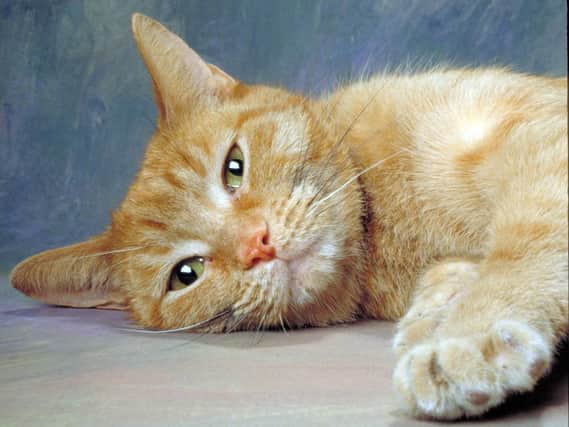Vets warn of surge in online videos featuring stressed pets - including cat and cucumber craze


In recent years there has been a huge increase of ‘funny ‘and ‘cute’ pet videos appearing online, garnering millions of views and shares.
As part of the research for its 2019 Vet Report, Vets4Pets watched a sample of viral pet videos, and found that many included stressed pets.
Advertisement
Hide AdAdvertisement
Hide AdCats fared worst, as 34 per cent of videos, that were watched by the vets, had cats that displayed signs of distress or anxiety.
To help combat this, vets are now raising awareness and offering advice to owners on what their pet’s behaviours really mean.
Dr Huw Stacey, vet and director of clinical services at Vets4Pets, said: “As vets we recognise that many of the popular videos online today actually involve pets displaying signs of distress or anxiety.
“This could add up to hundreds of thousands of pets being stressed unnecessarily.
Advertisement
Hide AdAdvertisement
Hide Ad“Most owners can spot when their pet is very angry or scared, whether it’s their dog growling or cat hiding away, but there are many other instances where a pet’s behaviours are more subtle and so can be easily misinterpreted.
“Cats especially are often misunderstood. We watched 100 random popular cat videos online, and aggression was seen in 15 per cent, whilst signs of distress such as flat ears and brushed tail were seen in around one in ten videos.
"Cats falling from a height were also seen in 15 per cent of the videos, five per cent of which were into water.
“The 2019 Vet Report explores pet behaviours in more detail, but an example of stressed pets can be seen in videos with cats and drones. Some cats may like chasing them, but others get nervous and the rotating blade isn’t safe for pets.
Advertisement
Hide AdAdvertisement
Hide Ad“Another example is the past craze of owners surprising their cats with cucumbers whilst they are eating, which often leads to the cats leaping high into the air.
“Cucumbers, or any other object placed behind a cat, will trigger this natural startle reflex, and if it is put where the cat is eating this can be especially severe, as cats associate these areas with safety. It can be perceived by the cat as a threat, like a snake, so will inevitably scare them into reacting.”
The cats and cucumber video craze is incredibly popular across the internet and social media, with the top compilation on YouTube gaining 36 million views in one year.
“There are obviously many videos out there which just show pets having fun with their owners, but it’s key that owners are able to spot when their pet is actually stressed and not just being cute or humorous,” continued Dr Stacey.
Advertisement
Hide AdAdvertisement
Hide Ad“Cats have very heightened senses, and as they are so attuned to their surroundings, their communication and behaviours are usually very subtle.
“This means that even the small changes in your cat’s ear positioning, eyes, whiskers and pupil size can all indicate a large change in their emotional state.
“Flattened ears indicate a defensive attitude, whilst swivelled ears mean a cat is readying for aggressive action.
“If a cat’s tail starts waving, lashing side to side or puffing up, then this is usually a sign the cat is upset or agitated, different to a dog where a waving tail often means they are very happy.”
Advertisement
Hide AdAdvertisement
Hide AdVets4Pets is hoping to help educate owners on the true meanings behind the different pet’s behaviours and language through its 2019 Vet Report, so they can spot when their pet is in a negative emotional state.
“The vast majority of the videos of pets shared online do genuinely feature happy and content pets, and we love to see happy pet videos, but it’s important for owners to know when their pet is actually stressed or scared so they can help to rectify the situation,” concluded Dr Stacey.
“If owners are ever unsure on what their pet is trying to tell them through their body language, or they are displaying any unusual behaviours, then we would always recommend that they go and speak to the local vet and qualified pet behaviourists for advice.”
For further information on pet behaviours and language, visit the 2019 Vet Report here: www.vets4pets.com/vetreport2019